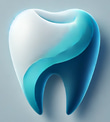Modern Dentistry: How Technology is Revolutionizing Your Experience
Learn how advancements are improving comfort, precision, and efficiency in dental care.
2/8/20254 min read


In recent years, technology has transformed many industries, and dentistry is no exception. Gone are the days when dental visits meant uncomfortable, time-consuming procedures that could make even the bravest patients nervous. Thanks to advancements in technology, modern dentistry has become more efficient, comfortable, and precise. From laser treatments to intraoral cameras and CAD/CAM systems, the tools available today are reshaping the dental experience.
Laser technology has become a game-changer in modern dentistry. Laser treatments allow for highly precise work with minimal discomfort, reducing the need for traditional drills. Lasers can be used in a variety of dental procedures, including gum disease treatment, cavity preparation, teeth whitening, and even soft tissue surgeries.
One of the key benefits of laser dentistry is its ability to target specific areas without damaging surrounding tissues. This makes it an excellent option for patients who experience anxiety or fear about the noise and vibration of traditional dental drills. Additionally, laser treatments often result in faster healing times and reduced bleeding due to the laser’s ability to coagulate blood vessels.
Laser dentistry is not only about comfort but also about precision. For example, lasers can remove decayed portions of a tooth with much greater accuracy, ensuring that as little healthy tissue as possible is removed. This results in more effective and durable restorations, ultimately improving the overall health of the teeth and gums.
Intraoral cameras are small, handheld devices that allow dentists to capture high-resolution images of the inside of a patient's mouth. These cameras provide a visual representation of the teeth, gums, and other oral structures, enabling dentists to diagnose problems with greater accuracy.
For patients, the real magic of intraoral cameras is the ability to see exactly what the dentist is seeing. These images are displayed on a monitor, allowing patients to better understand their oral health and the need for any treatments. This visual aid enhances communication between dentist and patient, making it easier for both parties to discuss treatment options and make informed decisions.
Intraoral cameras are especially helpful in identifying issues like cavities, cracks, gum disease, and other dental conditions that may not be visible to the naked eye. They can also be used to monitor the progress of treatment over time, providing a visual record that helps ensure the best possible care.
One of the most impressive technological advancements in modern dentistry is the introduction of CAD/CAM (Computer-Aided Design/Computer-Aided Manufacturing) systems. These systems allow dentists to design and create custom restorations, such as crowns, bridges, veneers, and dentures, right in the office.
The process starts with a 3D scan of the patient’s teeth, which is then used to create a digital model. Using CAD software, the dentist can design a custom restoration that fits perfectly. Once the design is complete, the CAM system mills the restoration from a solid block of material, such as ceramic, metal, or resin. This entire process typically takes just a few hours, allowing patients to walk out of the office with their new restorations in a single visit.
The benefits of CAD/CAM technology are vast. For patients, it means faster treatment times and more accurate restorations. Traditional impressions, which can be messy and uncomfortable, are replaced with digital scans, ensuring a more comfortable and precise fit. Additionally, the ability to create restorations in-house eliminates the need for multiple visits and reduces the turnaround time for labs, making dental care more efficient overall.
3D imaging, particularly Cone Beam Computed Tomography (CBCT), is another revolutionary tool in modern dentistry. Traditional X-rays provide only two-dimensional images of the teeth and jaw, which can sometimes limit a dentist’s ability to fully assess a patient’s condition. CBCT, however, creates three-dimensional images that allow for a much more detailed view of the oral structures.
With CBCT, dentists can see the full anatomy of the teeth, jawbone, nerves, and soft tissues, helping them to detect problems that may not be visible on traditional X-rays. This is particularly useful in complex procedures such as dental implants, root canals, and orthodontics, as it allows for more accurate treatment planning.
The ability to visualize the entire oral structure in three dimensions helps dentists avoid complications, ensure proper alignment of implants or other dental devices, and create more precise treatment plans. For patients, this means safer and more effective procedures with fewer surprises along the way.
As technology continues to evolve, so too does the field of dentistry. The advancements we’re seeing today, from laser treatments to 3D imaging and CAD/CAM systems, are revolutionizing the patient experience, making dental procedures more comfortable, efficient, and accurate than ever before.
For patients, this means fewer visits, faster recovery times, and a more personalized approach to care. For dental professionals, these innovations provide the tools necessary to deliver higher-quality treatments and better patient outcomes.
As technology continues to improve, we can expect even more exciting developments in the world of dentistry. Whether you're due for a routine check-up or need a more complex procedure, modern dentistry ensures that your experience will be as comfortable, efficient, and precise as possible.
The future of dentistry is not just about filling cavities or fixing broken teeth—it's about providing a comprehensive, seamless, and enjoyable experience that puts your health and comfort first. With these technological advancements, visiting the dentist is becoming a much more positive experience for everyone involved.
